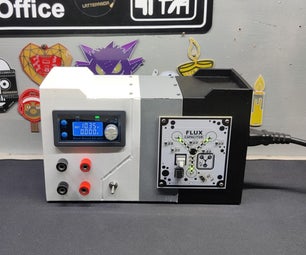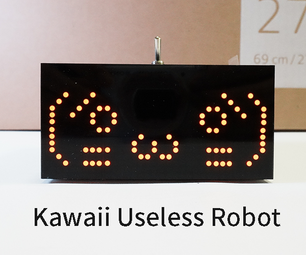Introduction: MacroCase - a DIY Phone Case for Macro Photography
Ever wanted to have a device handy enough so you can inspect things up close like Solder Reflows , Tiny Ants , Petals.. umm well anything that's difficult to see without much strain.
I had the same issue while i was soldering a circuit lately and felt the need for a hand-held microscope ( well kind of ) thing without any considerable weight reduction to my pocket. There were options like buying clip-on lenses or investing in a USB microscope. But as i usually say:
Why Buy When It can be built !
So, i made a phone cover that helps me peep up close. Whats better is it costed me about a dollar ( build cost doesnt include the phone cover as I was about to throw it in the dustbin ).
Interested in building it? Read On!
If you like the instructable, kindly vote by clicking the vote button on the top right corner !
Step 1: Shopping List
You wont require anything more than what a usual tinkerer has in his kitty.
Still here is the list:
- CR2032 Battery
- CR2032 Holder / Any Make shift contraption will be better too.
- A SPST (Tactile Button) SMD Better
- Some Copper Tape / Wire
- 1k resistor (SMD/Through Hole)
- 1 White LED (Through Hole)
- An eye Loupe (Usually available at watchmaker's), A broken one (as in my case) will do to. But make sure the front lens is fine.
- Hot Glue Gun
- Soldering Iron
- Solder
- Old/ Tattered/ Ready to Throw Back Cover (Rubber ones better)
- Sandpaper/Any Abrasive
- Epoxy Glue/ Araldite
- Usual Crafts Tape /Insulation Tape
Once you have got all parts lets put them together.
Step 2: Lens and the View
Open the Eye Loupe and use only the front lens (smaller lens) Although this reduces the magnification of the entire system and causes some amount of optical aberrations on the edges.If you use both the lens (with which u are compromising the compactness and distance you can go further) you can do that too.
Lightly Tape the the eye loupe on phone cover , with the cover on the phone and See the camera view. Like the picture.
Move the loupe so it produces a black circle in the frame appropriately. Once done, take the cover out and use Hot glue to glue the loupe to the case.
Make sure your phone is out of the cover. Or else you might end up accidentally applying hot glue elsewhere :)
Step 3: Illumination - LED
Sometimes we get too close to the object and hence some illumination is required to correctly light up the frame. In most cases the loupe will cover your LED Flash, making it useless. Hence we add an extra LED to the phone powered by a small CR2032 Battery.
But there's a catch. Focus
Most LEDs are encased in an epoxy lens and dont light things up uni-formally unless we are very far (in the microscope context) from them . We can either make a ring of LEDs around the Loupe to flood the scene with light. Or strategically place one to just get the job done.
I chose the second one.
Sand the LED to make it translucent and hence it will diffuse light better and place it with a mock resistor on the case. Connect a 3.3V supply/Battery to check positions.
Temporarily tape them as shown,
On the phone screen check whether the frame is uniformly lit and bend the led as it suits to get even illumination. Once you achieve uniform brightness just mark the spot using a marker etc. and start mixing the hardener and resin of the epoxy glue you use.
Once its done. its time to do the final assembly.
Step 4: Circuit UP
After mixing the epoxy glue, apply tiny amount of the paste to mount LED (in the marked spot), resistor, switch and the battery holder and securely place them there as shown in picture 2.
I prefer adding the switch beside the camera button on my Lumia as its more ergonomic that way. I can press both together when i need more light.
The circuit is pretty simple. Just a resistor to limit current and a switch to Turn ON/Off . 1k ohm is used as it lights up the scene bright enough to read values of the 0603 resistors, inspect solder joints/shorts etc and doesnt draw enough current and hence, longer battery life.
Use copper tape to assemble the circuit. Looks neat that way. Or you can use wire too but you will have to glue it anyway.
Once the components are firmly glued. Solder them as shown in picture 3.
Now you are done !
Step 5: Go and Peep Around
Get an App that has adjustable Focus that will help you get sharper images. Lumia owners have the default Nokia Camera. Just switch to pro mode and adjust focus to get a clear image and bang goes the shutter.
Then go ahead and crop the image for relevant parts and enjoy!
Hope you liked this instructable !
Please Vote for the project by clicking the Vote Button on the Right Corner
Thanks!

Participated in the
On a Budget Contest

Participated in the
Protected Contest

Participated in the
Explore Science Contest











